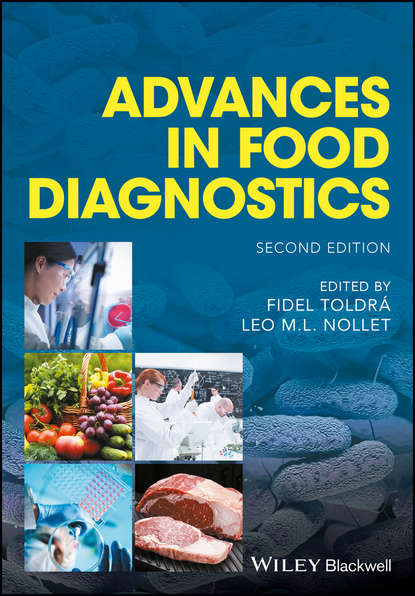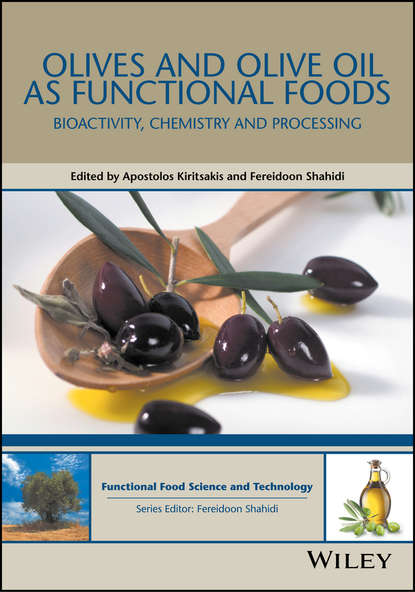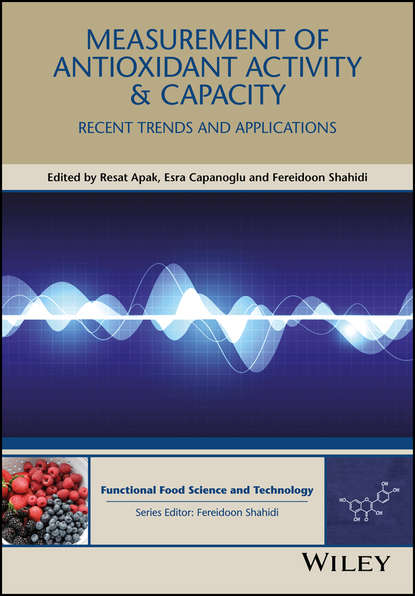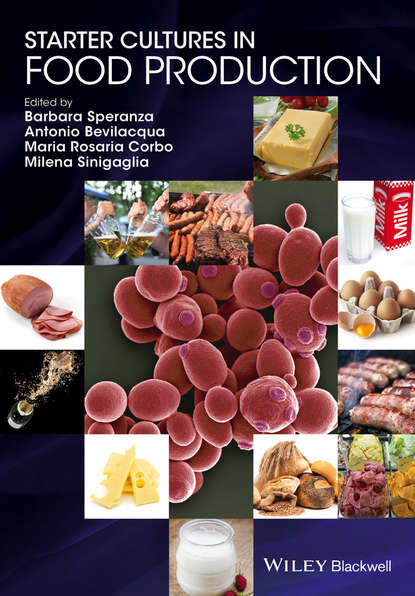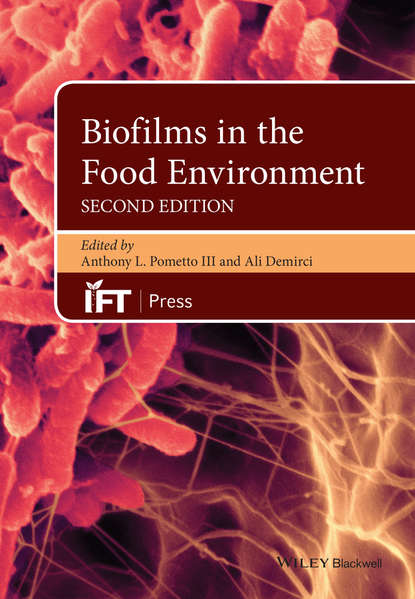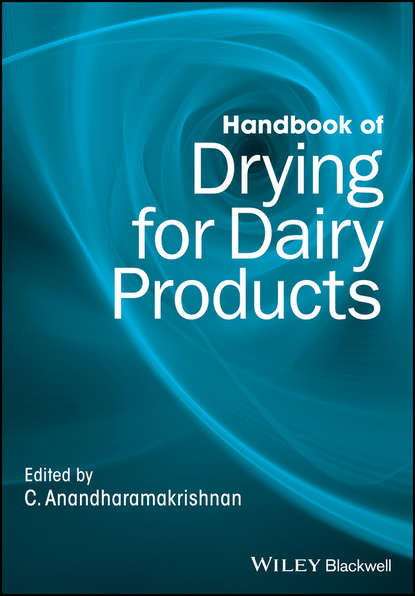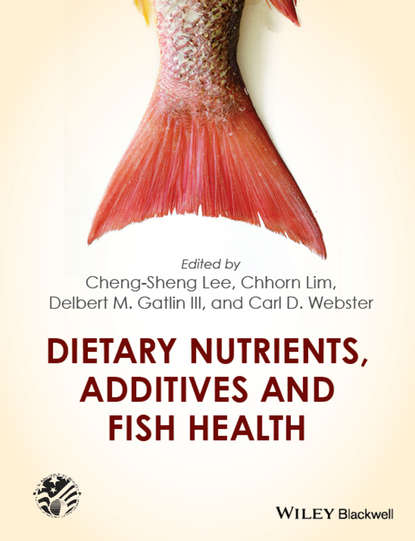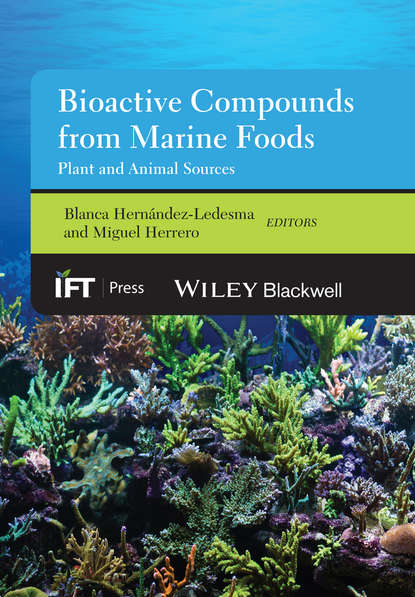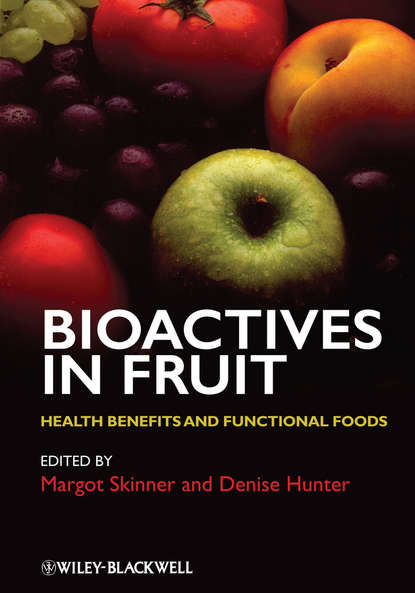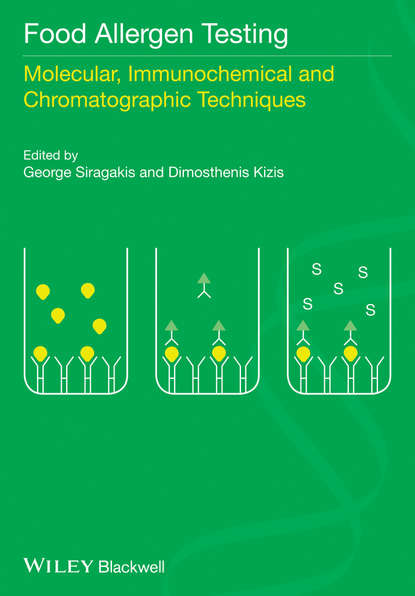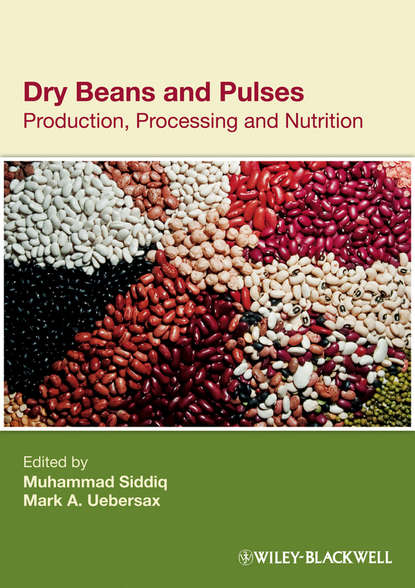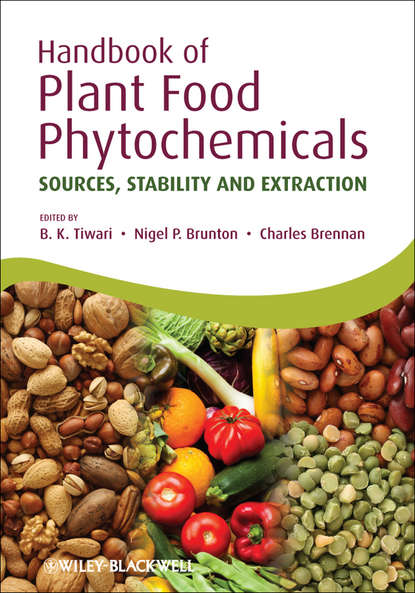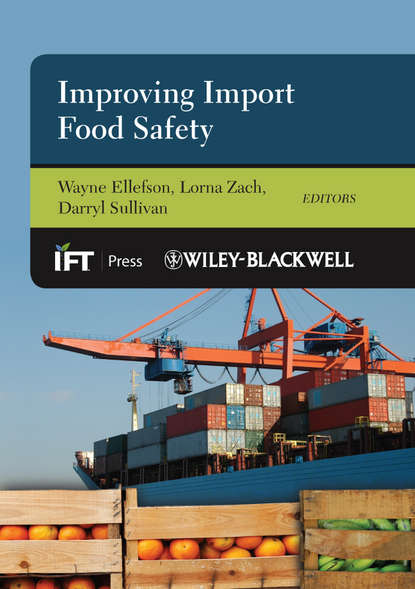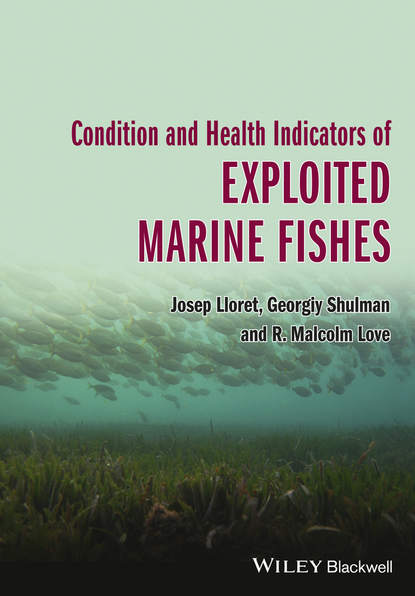Поиск:
Войти
Мукомольное производство
Still the most up-to-date, comprehensive, and authoritative book on food diagnostics available Featu…
Still the most up-to-date, comprehensive, and authoritative book on food diagnostics available Featuring seven entirely new chapters, the second edition of this critically acclaimed guide has been extensively revised and updated. Once again delivering food professionals the latest advances in food diagnostics and analysis, the book approaches the topic in several different ways: reviewing novel technologies to evaluate fresh products; describing and analysing in depth specific modern diagnostics; providing analyses of data processing; and discussing global marketing, with insights into future trends. Written by an international team of experts, this volume not only covers most conventional lab-based analytical methods, but also focuses on leading-edge technologies which are being or are about to be introduced. Advances in Food Diagnostics, Second Edition: Covers ultrasound, RMN, chromatography, electronic noses, immunology, GMO detection and microbiological and molecular methodologies for rapid detection of pathogens Explores the principles and applications of immunodiagnostics in food safety and the use of molecular biology to detect and characterize foodborne pathogens Includes DNA-based and protein-based technologies to detect and identify genetically-modified food or food components Focuses on the translation of diagnostics tests from bench to the market in order to illustrate the benefits to the food industry Provides an overview of the business end of food diagnostics; identifying the markets, delineating the sellers and the buyers, comparing current technology with traditional methods, certifying operations and procedures, and analysing diagnostic devices within the food and related industries This is an indispensable resource for food scientists, food quality analysts, food microbiologists and food safety professionals. It also belongs on the reference shelves of labs conducting food diagnostics for the analysis of the sensory, quality and safety aspects of food.
Добавлено
Год выхода: 2018
Язык: Английский
The only single-source reference on the science of olives and olive oil nutrition and health benefit…
The only single-source reference on the science of olives and olive oil nutrition and health benefits Olives and Olive Oil as Functional Foods is the first comprehensive reference on the science of olives and olive oil. While the main focus of the book is on the fruit’s renowned health-sustaining properties, it also provides an in-depth coverage of a wide range of topics of vital concern to producers and researchers, including post-harvest handling, packaging, analysis, sensory evaluation, authentication, waste product utilization, global markets, and much more. People have been cultivating olives for more than six millennia, and olives and olive oil have been celebrated in songs and legends for their life-sustaining properties since antiquity. However, it is only within the last several decades that the unique health benefits of their consumption have become the focus of concerted scientific studies. It is now known that olives and olive oil contain an abundance of phenolic antioxidants, as well as the anti-cancer compounds such as squalene and terpenoids. This centerpiece of the Mediterranean diet has been linked to a greatly reduced risk of heart disease and lowered cancer risk. Bringing together contributions from some of the world’s foremost experts on the subject, this book: Addresses the importance of olives and olive oil for the agricultural economy and the relevance of its bioactive components to human health Explores the role that olive oil plays in reducing oxidative stress in cells-a well-known risk factor in human health Provides important information about new findings on olive oil and lipids which reviews the latest research Explores topics of interest to producers, processors, and researchers, including the fruit’s chemical composition, processing considerations, quality control, safety, traceability, and more Edited by two scientists world-renowned for their pioneering work on olive oil and human health, this book is an indispensable source of timely information and practical insights for agricultural and food scientists, nutritionists, dieticians, physicians, and all those with a professional interest in food, nutrition, and health.
Добавлено
Год выхода: 2018
Язык: Английский
A comprehensive reference for assessing the antioxidant potential of foods and essential techniques …
A comprehensive reference for assessing the antioxidant potential of foods and essential techniques for developing healthy food products Measurement of Antioxidant Activity and Capacity offers a much-needed resource for assessing the antioxidant potential of food and includes proven approaches for creating healthy food products. With contributions from world-class experts in the field, the text presents the general mechanisms underlying the various assessments, the types of molecules detected, and the key advantages and disadvantages of each method. Both thermodynamic (i.e. efficiency of scavenging reactive species) and kinetic (i.e. rates of hydrogen atom or electron transfer reactions) aspects of available methods are discussed in detail. A thorough description of all available methods provides a basis and rationale for developing standardized antioxidant capacity/activity methods for food and nutraceutical sciences and industries. This text also contains data on new antioxidant measurement techniques including nanotechnological methods in spectroscopy and electrochemistry, as well as on innovative assays combining several principles. Therefore, the comparison of conventional methods versus novel approaches is made possible. This important resource: Offers suggestions for assessing the antioxidant potential of foods and their components Includes strategies for the development of healthy functional food products Contains information for identifying antioxidant activity in the body Presents the pros and cons of the available antioxidant determination methods, and helps in the selection of the most appropriate method Written for researchers and professionals in the nutraceutical and functional food industries,academia and government laboratories, this text includes the most current knowledge in order to form a common language between research groups and to contribute to the solution of critical problems existing for all researchers working in this field.
Starter cultures have great significance in the food industry due to their vital role in the manufac…
Starter cultures have great significance in the food industry due to their vital role in the manufacture, flavour, and texture development of fermented foods. Once mainly used in the dairy industry, nowadays starter cultures are applied across a variety of food products, including meat, sourdough, vegetables, wine and fish. New data on the potential health benefits of these organisms has led to additional interest in starter bacteria. Starter Cultures in Food Production details the most recent insights into starter cultures. Opening with a brief description of the current selection protocols and industrial production of starter cultures, the book then focuses on the innovative research aspects of starter cultures in food production. Case studies for the selection of new starter cultures for different food products (sourdough and cereal based foods, table olives and vegetables, dairy and meat products, fish and wine) are presented before chapters devoted to the role of lactic acid bacteria in alkaline fermentations and ethnic fermented foods. This book will provide food producers, researchers and students with a tentative answer to the emerging issues of how to use starter cultures and how microorganisms could play a significant role in the complex process of food innovation.
Carotenoids were first studied as natural pigments, then as precursors of vitamin A, and then as bio…
Carotenoids were first studied as natural pigments, then as precursors of vitamin A, and then as bioactive compounds against chronic diseases. These compounds have been and continue to be the subject of intense research worldwide, now with an expanded scope. Food Carotenoids: Chemistry, Biology and Technology gathers all the important information about these major compounds which impact both food quality and human health. It integrates in one volume various aspects of food carotenoids, such as: Structures and physicochemical properties Biosynthetic pathways and metabolism Analysis and composition of foods Stability and reactions during processing Commercial production as food colorants and precursors of aroma compounds Bioavailability and health benefits Having worked with carotenoids in various aspects for 44 years, Delia Rodriguez-Amaya is uniquely placed to pass on her wealth of knowledge in this field. This book will serve as solid background information for professionals in Food Science, Food Technology, Nutrition, Agriculture, Biology, Chemistry and Medical Sciences, whether in the academe, industry, governmental and non-governmental agencies.
Добавлено
Год выхода: 2018
Язык: Английский
The emergence of the discipline of encapsulation and controlled release has had a great impact on th…
The emergence of the discipline of encapsulation and controlled release has had a great impact on the food and dietary supplements sectors; principally around fortifying food systems with nutrients and health-promoting ingredients. The successful incorporation of these actives in food formulations depends on preserving their stability and bioavailability as well as masking undesirable flavors throughout processing, shelf life and consumption. This second edition of Encapsulation and Controlled Release Technologies in Food Systems serves as an improvement and a complement companion to the first. However, it differentiates itself in two main aspects. Firstly, it introduces the reader to novel encapsulation and controlled release technologies which have not yet been addressed by any existing book on this matter, and secondly, it offers an in-depth discussion on the impact of encapsulation and controlled release technologies on the bioavailability of health ingredients and other actives. In common with the first edition the book includes chapters written by distinguished authors and researchers in their respective areas of specialization. This book is designed as a reference for scientists and formulators in the food, nutraceuticals and consumer products industries who are looking to formulate new or existing products using microencapsulated ingredients. It is also a post-graduate text designed to provide students with an introduction to encapsulation and controlled release along with detailed coverage of various encapsulation technologies and their adaptability to specific applications.
In nature, microorganisms are generally found attached to surfaces as biofilms such as dust, insects…
In nature, microorganisms are generally found attached to surfaces as biofilms such as dust, insects, plants, animals and rocks, rather than suspended in solution. Once a biofilm is developed, other microorganisms are free to attach and benefit from this microbial community. The food industry, which has a rich supply of nutrients, solid surfaces, and raw materials constantly entering and moving through the facility, is an ideal environment for biofilm development, which can potentially protect food pathogens from sanitizers and result in the spread of foodborne illness. Biofilms in the Food Environment is designed to provide researchers in academia, federal research labs, and industry with an understanding of the impact, control, and hurdles of biofilms in the food environment. Key to biofilm control is an understanding of its development. The goal of this 2nd edition is to expand and complement the topics presented in the original book. Readers will find: The first comprehensive review of biofilm development by Campylobacter jejuni An up-date on the resistance of Listeria monocytogenes to sanitizing agents, which continues to be a major concern to the food industry An account of biofilms associated with various food groups such as dairy, meat, vegetables and fruit is of global concern A description of two novel methods to control biofilms in the food environment: bio-nanoparticle technology and bacteriophage Biofilms are not always a problem: sometimes they even desirable. In the human gut they are essential to our survival and provide access to some key nutrients from the food we consume. The authors provide up-date information on the use of biofilms for the production of value-added products via microbial fermentations. Biofilms cannot be ignored when addressing a foodborne outbreak. All the authors for each chapter are experts in their field of research. The Editors? hope is that this second edition will provide the bases and understanding for much needed future research in the critical area of ?Biofilm in Food Environment?.
This second edition provides information on recent advances in the science and technology of chocola…
This second edition provides information on recent advances in the science and technology of chocolate manufacture and the entire international cocoa industry. It provides detailed review on a wide range of topics including cocoa production, cocoa and chocolate manufacturing operations, sensory perception of chocolate quality, flavour release and perception, sugar replacement and alternative sweetening solutions in chocolate production, industrial manufacture of sugar-free chocolates as well as the nutrition and health benefits of cocoa and chocolate consumption. The topics cover modern cocoa cultivation and production practices with special attention on cocoa bean composition, genotypic variations in the bean, post-harvest pre-treatments, fermentation and drying processes, and the biochemical basis of these operations. The scientific principles behind industrial chocolate manufacture are outlined with detailed explanations of the various stages of chocolate manufacturing including mixing, refining, conching and tempering. Other topics covered include the chemistry of flavour formation and development during cocoa processing and chocolate manufacture; volatile flavour compounds and their characteristics and identification; sensory descriptions and character; and flavour release and perception in chocolate. The nutritional and health benefits of cocoa and chocolate consumption as well as the application of HACCP and other food safety management systems such as ISO 22,000 in the chocolate processing industry are also addressed. Additionally, detailed research on the influence of different raw materials and processing operations on the flavour and other quality characteristics of chocolates have been provided with scope for process optimization and improvement. The book is intended to be a desk reference for all those engaged in the business of making and using chocolate worldwide; confectionery and chocolate scientists in industry and academia; students and practising food scientists and technologists; nutritionists and other health professionals; and libraries of institutions where agriculture, food science and nutrition is studied and researched.
Handbook of Drying for Dairy Products is a complete guide to the field’s principles and applications…
Handbook of Drying for Dairy Products is a complete guide to the field’s principles and applications, with an emphasis on best practices for the creation and preservation of dairy-based food ingredients. Details the techniques and results of drum drying, spray drying, freeze drying, spray-freeze drying, and hybrid drying Contains the most up-to-date research for optimizing the drying of dairy, as well as computer modelling options Addresses the effect of different drying techniques on the nutritional profile of dairy products Provides essential information for dairy science academics as well as technologists active in the dairy industry
Fish nutrition can be the deciding factor between a robust and healthy farmed fish population and lo…
Fish nutrition can be the deciding factor between a robust and healthy farmed fish population and low aquaculture production. In an age where chemicals and antibiotics are under greater scrutiny than ever, a strong understanding of the role of nutrients and feed additives is essential in the aquaculture industry. Dietary Nutrients, Additives and Fish Health is a comprehensive review of dietary nutrients, antinutritional factors and toxins, and non-nutrient dietary additives, and their effects on fish performance and immune system function, as well as overall health. The book opens with an overview of fish immune systems and health. Subsequent chapters delve into proteins and amino acids, lipids and fatty acids, carbohydrates, beta glucans, vitamins, minerals, antinutrients, mycotoxins, nucleotides, prebiotics, probiotics, organic acids and their salts, and plant extracts and their impacts on fish health, growth, and development. The text then concludes with a chapter on feeding practices. Authored by leaders in aquaculture, Dietary Nutrients, Additives and Fish Health will be an invaluable resource to graduate students, researchers and professionals alike.
Добавлено
Год выхода: 2018
Язык: Английский
The first and only comprehensive reference/solutions manual for managing food safety in low-moisture…
The first and only comprehensive reference/solutions manual for managing food safety in low-moisture foods The first book devoted to an increasingly critical public health issue, Control of Salmonella and Other Bacterial Pathogens in Low-Moisture Foods reviews the current state of the science on the prevalence and persistence of bacterial pathogens in low-moisture foods and describes proven techniques for preventing food contamination for manufacturers who produce those foods. Many pathogens, such as Salmonella, due to their enhanced thermal resistance in dry environments, can survive the drying process and may persist for prolonged periods in low-moisture foods, especially when stored in refrigerated environments. Bacterial contamination of low-moisture foods, such as peanut butter, present a vexing challenge to food safety, and especially now, in the wake of widely publicized food safety related events, food processors urgently need up-to-date, practical information on proven measures for containing the risk of contamination. While much has been written on the subject, until now it was scattered throughout the world literature in scientific and industry journals. The need for a comprehensive treatment of the subject has never been greater, and now this book satisfies that need. Discusses a wide variety of foods and evaluates multiple processing platforms from the standpoint of process validation of all food safety objectives for finished food products Takes a practical approach integrating the latest scientific and technological advances in a handy working resource Presents all known sources and risk factors for pathogenic bacteria of concern in the manufacturing environment for low-moisture/water activity products Characterizes the persistence and thermal resistance of bacterial pathogens in both the environment and most low-moisture food products Control of Salmonella and Other Bacterial Pathogens in Low-Moisture Foods is a much-needed resource for food microbiologists and food industry scientists, as well as managers and executives in companies that produce and use low-moisture foods. It also belongs on the reference shelves of food safety regulatory agencies worldwide.
Добавлено
Год выхода: 2018
Язык: Английский
Part of the IFT Press series, this book reviews the myriad published information on bioactive compon…
Part of the IFT Press series, this book reviews the myriad published information on bioactive components derived from marine foods, enabling researchers and product developers to select appropriate functional ingredients for new products. Chapters cover foods and food ingredients from both animal and plant marine sources, focusing on those which demonstrate biological properties and whose constituent compounds have been isolated and identified as potentially active. This book further addresses the biological activities of PUFAs (Polyunsaturated fatty acids), oils, phospholipids, proteins and peptides, fibres, carbohydrates, chitosans, vitamins and minerals, fucoxantin, polyphenols, phytosterols, taurine, amongst others. These components, found in a variety of marine-derived foods, have been demonstrated to have preventative properties with regard to hypertension, oxidative stress, inflammation, cardiovascular diseases, cancer and other human diseases. Extraction methods and analysis techniques are also addressed. Intended for food scientists, food technologists and food engineers in academia, industry and government, this book reviews the substantial quantity of current research in this fast-moving and commercially valuable sector of food and nutrition science.
For centuries we have known that fruit is important for health, but we are only just beginning to fu…
For centuries we have known that fruit is important for health, but we are only just beginning to fully understand why. Bioactives in Fruit: Health Benefits and Functional Foods aims to summarise some of our current knowledge on the bioactive compounds that are associated with the health benefits of specific fruits with a strong emphasis on the validation of health benefits by human intervention trials. Reflecting the current interest in food and health, the book includes strategies to retain and enhance the bioactives in fruit through breeding, growing conditions, fruit storage, processing into ingredients and production of functional foods. To accomplish this task authors with expertise in biology, chemistry, pharmacology, food science, nutrition, medicine, and horticulture have contributed. They come from universities, government and industry funded research institutes and biotechnology and food companies in Europe, the United States, Asia and New Zealand to give the book a broad perspective. This book, describing fruit bioactives, their health benefits when consumed as a food and related topics regarding their development into fresh or processed functional foods, will be of use to postgraduate students, researchers, functional food product developers, food regulators and anyone who has curiosity about why fruit is good for you. The information contained within will provide plant breeders with new targets for the development of value-added horticultural products, and will also provide nutritionists and dieticians with a useful resource for developing strategies to assist in preventing or slowing disease onset or severity. Bioactives in Fruit: Health Benefits and Functional Foods is a major resource which will be required reading for anyone working in the fields of health and functional foods.
Добавлено
Год выхода: 2018
Язык: Английский
An in-depth review of the current scientific knowledge on food allergens testing, covering the major…
An in-depth review of the current scientific knowledge on food allergens testing, covering the major methodologies and techniques used to detect food allergens. Food allergens are a series of agents, mainly proteins, which cause various unpleasant and sometimes clinical symptoms in humans through consumption of foods. Perhaps surprisingly, there are no treatments against food allergies which have been found to be 100% effective. The scope for individual difference in terms of how a person reacts to a given allergen is massive, making it incredibly difficult and complex to try and medicate against allergies. Food Allergens Testing takes a thorough look at modern molecular biology and immunochemical techniques used to detect food allergens. The eleven chapters constitute an in-depth review of the current scientific knowledge on food allergens, covering the major methodologies and techniques used in validated analytical approaches. The book is aimed at scientists and technical staff in the food industry and analytical laboratories who need an up-to-date treatment of both fundamental and applied research goals on food allergens, as well as a report on the validated methods currently in use for food allergens testing.
Добавлено
Год выхода: 2018
Язык: Английский
The common beans and pulses are diverse food resources of high nutritional value (protein, energy, f…
The common beans and pulses are diverse food resources of high nutritional value (protein, energy, fiber and vitamins and minerals) with broad social acceptance. These legume crops demonstrate global adaptability, genotypic and phenotypic diversity, and multiple means of preparation and dietary use. Beans and pulses are produced in regions as diverse as Latin America, Africa, Asia, and North America, and on a scale similar to some other crops, such as wheat, corn, rice and soybeans. Numerous factors influence utilization, including bean type and cultivar selection, cropping environment and systems, storage conditions and handling infrastructure, processing and final product preparation. Nutrient content and bio-availability are dramatically influenced by these conditions. In recent years, beans and pulses have been cited for imparting specific positive health potentiating responses, such as hypocholesteremic response, mitigation of diabetes and colonic cancer, and weight control. Enhanced dry bean utilization focused on improved dietary health is an opportunity within both subsistent and developed populations. This book provides a contemporary source of information that brings together current knowledge and practices in the value chain of beans/pulses production, processing, and nutrition. It provides in-depth coverage of a wide variety of pertinent topics including: breeding, postharvest technologies, composition, processing technologies, food safety, quality, nutrition, and significance in human health. An experienced team of over 25 contributors from North America, Asia, and Africa has written 15 chapters, divided into three sections: Overview, production and postharvest technologies of beans and pulses Composition, value-added processing and quality Culinology, nutrition, and significance in human health Contributors come from a field of diverse disciplines, including crop sciences, food science and technology, food biochemistry, food engineering, nutritional sciences, and culinology. Dry Beans and Pulses Production, Processing and Nutrition is an essential resource for scientists, processors and nutritionists, whatever the work setting.
Добавлено
Год выхода: 2018
Язык: Английский
Phytochemicals are plant derived chemicals which may bestow health benefits when consumed, whether m…
Phytochemicals are plant derived chemicals which may bestow health benefits when consumed, whether medicinally or as part of a balanced diet. Given that plant foods are a major component of most diets worldwide, it is unsurprising that these foods represent the greatest source of phytochemicals for most people. Yet it is only relatively recently that due recognition has been given to the importance of phytochemicals in maintaining our health. New evidence for the role of specific plant food phytochemicals in protecting against the onset of diseases such as cancers and heart disease is continually being put forward. The increasing awareness of consumers of the link between diet and health has exponentially increased the number of scientific studies into the biological effects of these substances. The Handbook of Plant Food Phytochemicals provides a comprehensive overview of the occurrence, significance and factors effecting phytochemicals in plant foods. A key of objective of the book is to critically evaluate these aspects. Evaluation of the evidence for and against the quantifiable health benefits being imparted as expressed in terms of the reduction in the risk of disease conferred through the consumption of foods that are rich in phytochemicals. With world-leading editors and contributors, the Handbook of Plant Food Phytochemicals is an invaluable, cutting-edge resource for food scientists, nutritionists and plant biochemists. It covers the processing techniques aimed at the production of phytochemical-rich foods which can have a role in disease-prevention, making it ideal for both the food industry and those who are researching the health benefits of particular foods. Lecturers and advanced students will find it a helpful and readable guide to a constantly expanding subject area.
Food safety has been a global concern for many years. While global sourcing of foods and ingredients…
Food safety has been a global concern for many years. While global sourcing of foods and ingredients provides great opportunity for variety and diversity of cultural products, there are significant risks. Programs that regulate food safety and quality in countries around the world vary in their scope and effectiveness, with many being underfunded. Rapidly developing countries may lack the expertise, laboratory resources for testing, and established inspection programs to adequately promote the safety of foods. Rather, these countries may be more focused on providing enough food for their citizens. Lack of documentation or traceability in the exporting country can further exacerbate the situation. Of course, safety problems in food imported from more developed countries also occur, and the source of food borne disease outbreaks are found regularly within the United States. Improving Import Food Safety gathers together vital information on the food safety programs of national governments, the food industry, and the testing industry. Chapters have been contributed by authors from the United States, Latin America, Europe, and Asia. Readers will learn about a variety of regulatory approaches to food safety at the federal and state levels in the United States, as well as in selected countries and within the food industry itself. They will also gain insights into the nature and source of safety problems, in addition to approaches to food safety around the world. The book is divided into three sections: Highlighting Key Issues: authors illustrate the millions of permutations for the origin of ingredients, discussing the difficulty if policing imports, providing a unique perspective on the economic situation in China and insight into development of support for small farm producers in Mexico. Legal and Regulatory Issues/Structures in the USA and Abroad: describes the legal and regulatory system in the European Union, the United States, and China, plus a chapter addressing global approaches to fraud. Potential Strategies to Improve Import Safety: presents strategies to deal with what are ultimately global issues, but on multiple levels. Perspectives are provided by authors from Industry, and industry trade association, academia, and a recently semi-retired, global ambassador or food safety. Readers will find this book noteworthy because of the diverse topics and perspectives offered on the challenges of keeping food safe in a global economy. Authors come from a variety of backgrounds, and each has provided a unique perspective on this critical topic. The volume is aimed at importers and exporters of food and ingredients; food microbiologists, food safety and QC/QA personnel; regulatory and legal personnel in food manufacturing companies; food policy makers and regulatory officials and facility and graduate students in food science.
Formulation Engineering of Foods provides an in-depth look at formulation engineering approaches to …
Formulation Engineering of Foods provides an in-depth look at formulation engineering approaches to food processing and product development of healthier, higher-performance foods. Through the use of eye-catching examples, such as low fat and low calorie chocolate, and salt reduction strategies in products like cheese and sauces, the book is at once easy to relate to and innovative. Presenting new methods and techniques for engineering food products, this book is cutting edge and as food formulation is a new method of food science, this is a timely publication in the field. All three editors are based in the University of Birmingham, base of the largest Chemical Engineering-based food research group in the UK, incorporating research into structured foods, flavour delivery and food hygiene. Research in food processing is carried out in partnership with key companies such as Nestlé, Unilever and Cadbury, as well as through funding from research councils and DEFRA. Joint research and collaboration has been carried out with Food Science departments at Nottingham, Leeds and Reading.
Oils and fats are almost ubiquitous in food processing, whether naturally occurring in foods or adde…
Oils and fats are almost ubiquitous in food processing, whether naturally occurring in foods or added as ingredients that bring functional benefits. Whilst levels of fat intake must be controlled in order to avoid obesity and other health problems, it remains the fact that fats (along with proteins and carbohydrates) are one of the three macronutrients and therefore an essential part of a healthy diet. The ability to process oils and fats to make them acceptable as part of our food supplies is a key component in our overall knowledge of them. Without this ability, the food that we consume would be totally different, and much of the flexibility available to us as a result of the application of processing techniques would be lost. Obviously we need to know how to process fatty oils, but we also need to know how best to use them once they have been processed. This second edition of Edible Oil Processing presents a valuable overview of the technology and applications behind the subject. It covers the latest technologies which address new environmental and nutritional requirements as well as the current state of world edible oil markets. This book is intended for food scientists and technologists who use oils and fats in food formulations, as well as chemists and technologists working in edible oils and fats processing.
Добавлено
Год выхода: 2018
Язык: Английский
This important and informative new book outlines and discusses details of the basic principles and m…
This important and informative new book outlines and discusses details of the basic principles and methods that are central to any study of fish condition, from a fish ecology and fisheries biology perspective. Condition and Health Indicators of Exploited Marine Fishes describes the potential capacities of condition indicators, providing examples showing the use of these indicators to solve practical problems in connection with fish ecology and fisheries research. By focusing on wild fish populations, the book complements the increasing number of scientific works that are contributing to show how fish condition studies are key to reveal problems in marine aquaculture, the effects of pollution, fish disease, and the importance of fish in human nutrition and medicine. Condition and Health Indicators of Exploited Marine Fishes provides a comprehensive introduction to the study of fish condition that will assist advanced undergraduate and postgraduate students, researchers and professionals, working in marine ecology and biology, fisheries biology, environmental sciences and fish pathology. All universities and research establishments where biological and environmental sciences, fisheries and aquaculture are studied and taught should have copies of this book on their shelves.
Популярные книги




